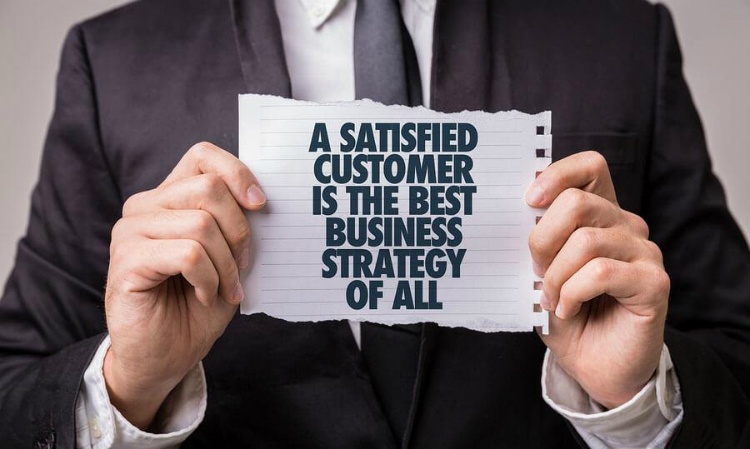Approximately 70% of customers conduct online research of the product they are interested in before going to the store for purchase, and almost one in four visitors of an ordinary store, without leaving the store, goes online with their smartphone to get information about the product they have just seen (thanks to Magento 2 Shipping Cost Calculator).
How should e-commerce startuppers react to the coming future? How can they adapt to the future with the least loss?
The right basics
Before we go any further, we want to make it clear: e-commerce is not going anywhere. While conventional retailers are more convenient for the customer because they get instant satisfaction from the purchase, online retailers offer consumers a level of variety and novelty that simply cannot be achieved without using the Internet.
Despite the advantages just mentioned, e-commerce is becoming more and more difficult to do.
Suppose that you have an ordinary, “non-electronic” souvenir shop. It is clear that you need to start building a customer base with a list of already available regular (offline) customers before you start to go online. But in any case without electronic marketing, you cannot be any more competitive.
Here’s an example for you: Justin Winter has built his eCommerce business with an annual turnover of $12,000,000 in just 18 months. His company “Diamond Candles” sells decorative scented candles for the home, and yes, inside each candle there is a ring, may be like a diamond (the price of a candle ranges from $10 to $5000).
And here’s the secret to Justin’s success: he posted 7 links to his online store on popular eCommerce sites.

Almost any successful eCommerce site is built on using at least a few of these principles:
1. “Fight at the bottom of the hill”: you want your product to be innovative for a multi-billion dollar industry that, however, has never been renowned for its innovation. For example, the “innovation boom” in the menswear industry is associated with the emergence of brands such as Bonobos, Indochino, Flint and Tinder, MeUndies, although there is nothing revolutionary new for the manufacturers of these clothes. The main thing is that the magic word “innovation” was heard.
2. Do not become a “product expert”: your task is to bring innovation, novelty and an unusual perspective to your market sector. This does not mean becoming an expert. Contract manufacturers are increasingly interested in working with small quantities of innovative products for new brands. These manufacturers, with their industrial experience, will be your experts to guarantee the quality of your products.
Just find out who you need to pay and how much to get the quality you need. Don’t waste time trying to become an expert if you already have one nearby.
3. The design really helps to spread the product. It is possible that full-scale viral marketing is a myth, but there is no doubt that if your product is talked about, it is your marketing advantage. Here we mean the famous “purple cow” of Seth Godin. At the same time, your product must be really good, it is much more important than its ability to cause debate and discussion around itself.
4. “Copy” experts from other marketing niches. Justin Winter offers to imitate the legendary innovators who have become famous as pioneers in their business sectors. However, you are not looking for role models in your field – you are learning from pioneers who have done something very different than what you do.
5. Start with the only marketing channel. It’s quite simple: stick to one channel as long as you know how to make it profitable. Justin advises you to choose a channel that can be used as both free and paid. In his case, it was Facebook. The point is to choose a channel that makes sense to use to promote your product and stick to it while it is running before you try to do anything else.
6. Get a mentor – this is very important. You should have someone you know who has done a similar business before: it’s better to learn from other people’s mistakes.
7. Optimize conversion! Optimize your unique selling proposition (offer, in other words), the story of the product itself, social evidence, privacy, and money-back guarantees; optimize everything you can to make a profit as quickly as possible.
If you do not stick to these fundamentals, you are unlikely to succeed if (and when) you decide to expand your eCommerce business “beyond” the Internet.
The methods web marketers try to preserve their customers can also be useful in retail. On both platforms, online and offline, businesses have these advantages:

Knowledgeable, attentive, friendly staff.
A unique trading experience that is valuable in itself: you can discuss a product, study it without spending a penny (as it happens on the Internet). In other words, a modern retailer encourages you to study its offer, just as an eCommerce representative does.
Building a community around your “physical location” and blurring the boundaries between it and your online communities: guest events, encouraging participation in company events, interactive glasses.
Instead of concluding
Although eCommerce has come “seriously and for a long time,” the most successful and visionary representatives of the industry in the near future, judging by some signs, are going to diversify their efforts and penetrate more actively into the “physical world” to use this “expansion into reality” to increase sales both online and offline.
E-commerce start-upers do not have to take this step right now, but they have to think from the very beginning of their activities how they will adapt to the inevitable changes.
We hope this little guide has helped you learn something new about the intersection of online and offline commerce.
High conversion rates for you!


